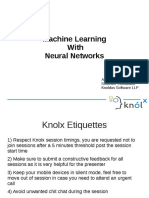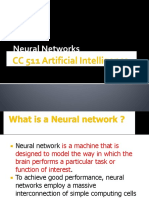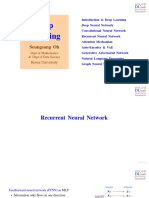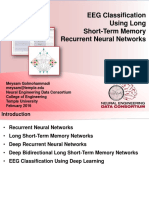0% found this document useful (0 votes)
57 views100 pagesIntro To Neural Networks
The document introduces neural networks and the perceptron. It covers the basic concepts of the perceptron, how to connect perceptrons together into a neural network, and how to train perceptrons using gradient descent and backpropagation. It provides examples to illustrate neural network concepts and terminology.
Uploaded by
sahibCopyright
© © All Rights Reserved
We take content rights seriously. If you suspect this is your content, claim it here.
Available Formats
Download as PDF, TXT or read online on Scribd
0% found this document useful (0 votes)
57 views100 pagesIntro To Neural Networks
The document introduces neural networks and the perceptron. It covers the basic concepts of the perceptron, how to connect perceptrons together into a neural network, and how to train perceptrons using gradient descent and backpropagation. It provides examples to illustrate neural network concepts and terminology.
Uploaded by
sahibCopyright
© © All Rights Reserved
We take content rights seriously. If you suspect this is your content, claim it here.
Available Formats
Download as PDF, TXT or read online on Scribd
/ 100




















































































